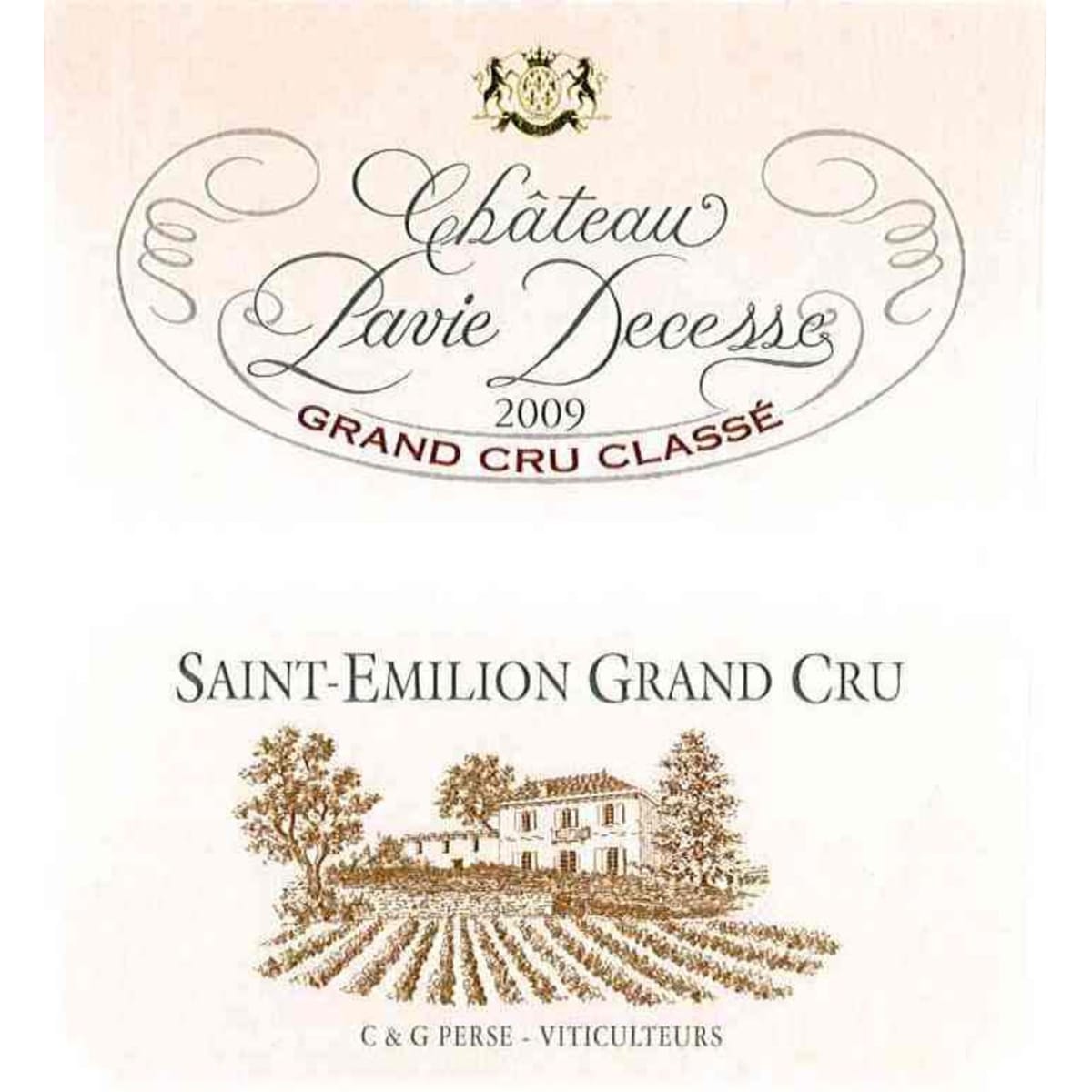Chateau Pavie Decesse 2009
-
Wine
Spectator -
Robert
Parker


Product Details
Your Rating
Somm Note
Winemaker Notes
Professional Ratings
-
Wine Spectator
Terrifically rich yet beautifully rendered, with precise linzer torte, currant paste, fig sauce and pain d’épices aromas and flavors that cascade through the voluptuous finish. Beautifully polished, with a huge core of pure fruit in reserve that should blossom with extended cellaring. Best from 2016 through 2031.
-
Robert Parker's Wine Advocate
Gerard Perse's tiny 9-acre vineyard has a high density of vines and lots of age on them as well (48 years on average) on pure limestone soils, with a southerly exposure. The final blend here is the classic 90% Merlot and 10% Cabernet Franc. Unfortunately, there are only 1,000 cases from the tiny yields, and the wine, by St.-Emilion standards, is actually not that high in alcohol – 14.3%. A sign of the terrific minerality this wine possesses, crushed rocks jump from the glass of this inky bluish/purple-colored wine. Opaque to the rim, with full-bodied power, a liqueur of rocks intermixed with creme de cassis, spring flowers, black cherry, incense, and virtually no evidence of any oak, alcohol or tannin, the wine is fat, viscous, and opulent. It is a remarkable treat to taste so young, but analytically, the index of tannins is the highest Perse has yet had, even eclipsing the 2005. This wine should drink well for 30-35 or more years
Barrel Sample: 93-96 Points
Other Vintages
2022-
James
Suckling
-
Jeb
Dunnuck -
James
Suckling - Decanter
-
Jeb
Dunnuck -
James
Suckling -
Robert
Parker - Decanter
-
James
Suckling -
Jeb
Dunnuck -
Wine
Enthusiast -
Robert
Parker
-
Jeb
Dunnuck -
James
Suckling -
Robert
Parker -
Wine
Spectator - Decanter
-
Jeb
Dunnuck -
Wine
Spectator -
Robert
Parker -
James
Suckling - Decanter
-
Wine
Enthusiast
-
James
Suckling -
Jeb
Dunnuck -
Robert
Parker - Decanter
-
Wine
Spectator -
Wine
Enthusiast
-
Jeb
Dunnuck -
James
Suckling -
Wine
Enthusiast -
Wine
Spectator -
Robert
Parker - Decanter
-
Wine
Spectator -
James
Suckling -
Wine
Enthusiast -
Robert
Parker - Decanter
-
Robert
Parker -
James
Suckling -
Wine
Spectator
-
James
Suckling -
Wine
Spectator -
Robert
Parker
-
Robert
Parker -
Wine
Spectator
-
Robert
Parker -
Wine
Spectator
-
Robert
Parker -
Wine
Spectator
-
Robert
Parker -
Wine
Spectator
-
Jeb
Dunnuck -
Robert
Parker
-
Robert
Parker -
Wine
Spectator
-
Robert
Parker -
Wine
Spectator -
Wine
Enthusiast
-
Robert
Parker
-
Wine
Spectator -
Robert
Parker







Château Pavie-Decesse was long hidden by the shadow of its older brother, Château Pavie. The two estates, Grand Cru Classé of Saint-Emilion, were separated in 1885 but keep a lot of similarities. Both own by Gérard Perse since 1997 and benefiting from an exceptional location on the limestone plateau of Saint-Emilion. With 3.5 hectares of prime land, it is planted with 90% Merlot and 10% Cabernet Franc. The vines are a respectable 43 years old on average and a draconian level of requirement is practiced in the vineyard to obtain the most beautiful and mature harvest each year. The grapes are picked and sorted by hand, then fermented in nine temperature-controlled wooden vats for three weeks to produce approximately 600 cases per year.

One of the world’s most classic and popular styles of red wine, Bordeaux-inspired blends have spread from their homeland in France to nearly every corner of the New World. Typically based on either Cabernet Sauvignon or Merlot and supported by Cabernet Franc, Malbec and Petit Verdot, the best of these are densely hued, fragrant, full of fruit and boast a structure that begs for cellar time. Somm Secret—Blends from Bordeaux are generally earthier compared to those from the New World, which tend to be fruit-dominant.

Marked by its historic fortified village—perhaps the prettiest in all of Bordeaux, the St-Émilion appellation, along with its neighboring village of Pomerol, are leaders in quality on the Right Bank of Bordeaux. These Merlot-dominant red wines (complemented by various amounts of Cabernet Franc and/or Cabernet Sauvignon) remain some of the most admired and collected wines of the world.
St-Émilion has the longest history in wine production in Bordeaux—longer than the Left Bank—dating back to an 8th century monk named Saint Émilion who became a hermit in one of the many limestone caves scattered throughout the area.
Today St-Émilion is made up of hundreds of independent farmers dedicated to the same thing: growing Merlot and Cabernet Franc (and tiny amounts of Cabernet Sauvignon). While always roughly the same blend, the wines of St-Émilion vary considerably depending on the soil upon which they are grown—and the soils do vary considerably throughout the region.
The chateaux with the highest classification (Premier Grand Cru Classés) are on gravel-rich soils or steep, clay-limestone hillsides. There are only four given the highest rank, called Premier Grand Cru Classés A (Chateau Cheval Blanc, Ausone, Angélus, Pavie) and 14 are Premier Grand Cru Classés B. Much of the rest of the vineyards in the appellation are on flatter land where the soils are a mix of gravel, sand and alluvial matter.
Great wines from St-Émilion will be deep in color, and might have characteristics of blackberry liqueur, black raspberry, licorice, chocolate, grilled meat, earth or truffles. They will be bold, layered and lush.
